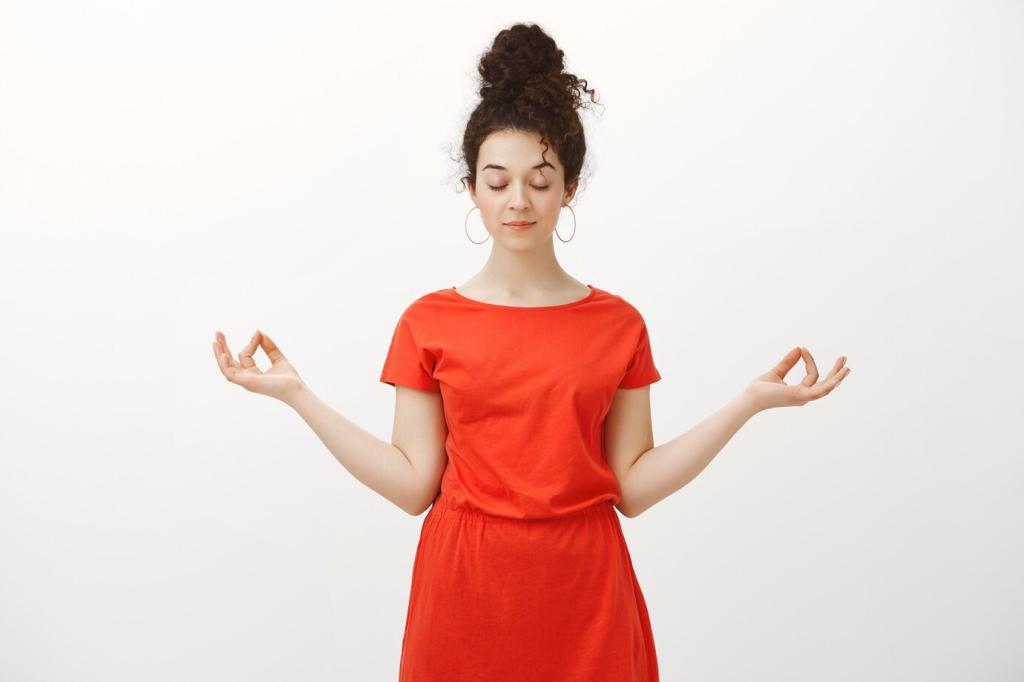Breathe, Release, Renew: Progressive Muscle Relaxation
Chosen theme: Progressive Muscle Relaxation. Discover a gentle, science-informed practice that turns tightness into ease, one muscle group at a time. Settle in, exhale slowly, and subscribe for weekly calm challenges designed to help you build a steadier, softer nervous system.

How PMR Works in Your Body
By deliberately tensing and then releasing, you create a contrast the brain can clearly register. This contrast encourages parasympathetic activation, slows heart rate, and softens breath. Over time, your body learns the feeling of ease on cue, making relaxation a skill rather than a lucky accident.
A Two-Minute Origin Story
In the early twentieth century, physician Edmund Jacobson observed that mental quiet followed physical release. He mapped muscles, refined sequences, and taught patients to notice tension precisely. That careful attention became Progressive Muscle Relaxation, a practice blending physiology, awareness, and practical steps anyone can follow daily.
Step-by-Step PMR for Beginners
Set the Scene
Sit or lie comfortably, loosen anything tight, and silence notifications for a few minutes. Let your shoulders drop and soften your jaw. Inhale through the nose, exhale longer through the mouth. Bookmark this routine, invite a friend to try it tonight, and share your setup in the comments.
Tense, Then Release
Starting at your feet, gently tense a muscle group for about five to seven seconds, then release for ten to fifteen. Notice warmth, heaviness, or tingling. Move upward: calves, thighs, glutes, belly, hands, arms, shoulders, neck, face. Keep effort modest, never straining. Exhale on release, and feel the wave of softening.
Close With Calm
After the final release, pause for a full minute. Scan from toes to brow, noticing pockets of lingering ease. Name three sensations you appreciate—heavy, warm, spacious—and breathe into them. Jot a one-line reflection and share your first impressions below so others can learn from your experience.

Stress and Cortisol
PMR nudges your nervous system toward rest-and-digest, which can help reduce perceived stress and improve emotional regulation. Many people report fewer stress spikes and faster recovery after tense moments. Try a daily ten-minute practice for one week, then tell us how your baseline tension and patience have changed.

Sleep Quality
Practicing PMR before bed helps quiet racing thoughts and releases the neck and jaw tension that often delays sleep. People often fall asleep faster and wake fewer times. Test it tonight: five cycles from feet to face, lights dim, slow exhale. Comment tomorrow with how long it took to drift off.

Pain and Performance
By downshifting protective muscle guarding, PMR may reduce tension-related discomfort such as headaches or tight shoulders. Athletes use it to recover more completely and to refine body awareness. If you notice fewer flare-ups after sessions, subscribe for ongoing tips to pair PMR with gentle mobility and pacing.
Stories From the Quiet Side
Amira’s Commute Reset
Stuck on a crowded train, Amira clenched her toes, breathed out, and let the softness rise up her legs. By the next station her shoulders melted, and she stopped doomscrolling. She now pairs PMR with two songs and arrives kinder. Share your commute ritual, and inspire someone’s morning.
Jon’s Pre-Meeting Ritual
Before presenting, Jon spends three minutes at his desk: hands, forearms, shoulders, jaw. He exhales longer than he inhales and visualizes space behind his eyes. The wobble in his voice steadies, and questions feel friendlier. What is your pre-meeting sequence? Post it, and let’s build a community playbook.
Maya’s Nighttime Routine
Maya used to scroll until midnight. Now she dims lights, tenses and releases her face, and listens for the quiet after the last exhale. Dreams come quicker, and mornings feel less heavy. Try her three-minute face focus tonight, then report back with how your jaw and eyes responded.

Adapting PMR to Your World
Short on time? Try micro-PMR: wrists, forearms, shoulders, jaw. Twenty seconds each, two rounds, with a slow sigh. It blends into workdays without signaling you are doing anything special. Share your favorite quick trigger—calendar notifications, a mug refill, or a stretch—to cue consistent practice.
Adapting PMR to Your World
If you live with pain or fatigue, use lighter tension or only the release phase. Skip any area that protests, and consult a clinician if unsure. Your comfort leads. Tell us what modifications feel kind to your body so others can practice safely and compassionately alongside you.


